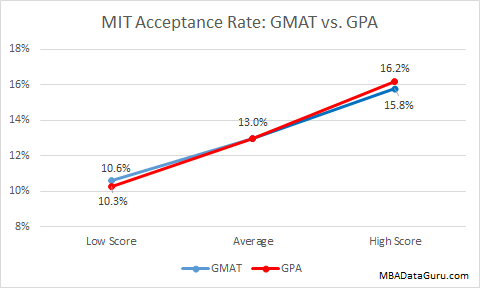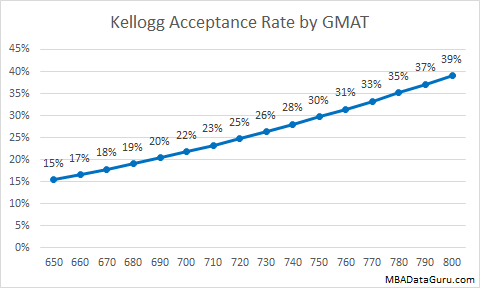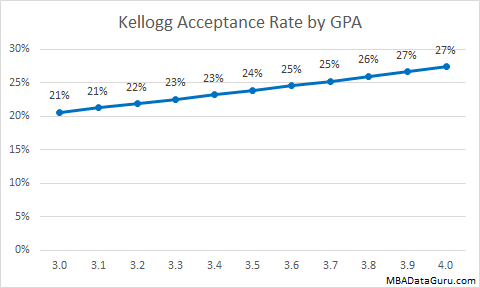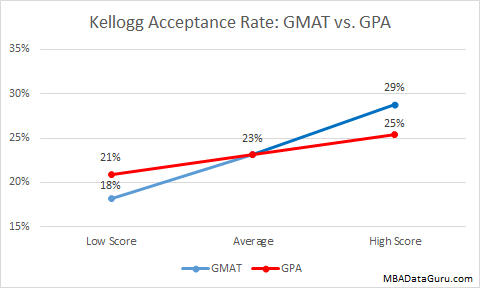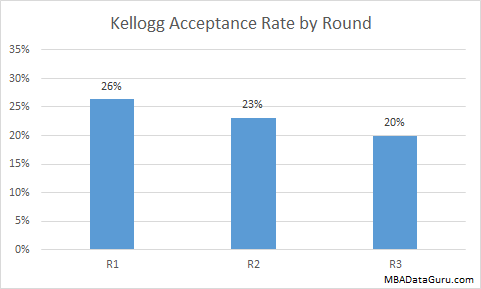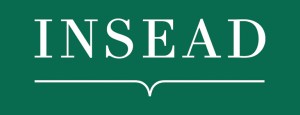 This article will analyze the model I built to predict INSEAD acceptance rate. INSEAD is a graduate business school in France, near Paris. It has two additional campuses in Singapore and Abu Dhabi. In addition to the MBA program, INSEAD also has an Executive MBA, Masters in Finance and a PHD in Management. Unlike most business schools in the US, INSEAD’s full-time program only offers a 1-year MBA. INSEAD students can either start in September or January. The January start is a 12-month program for students who would like to do an internship. The September start is a 10-month program. INSEAD prides itself on being a global business school, thus, it requires applicants to speak two languages fluently before being admitted. In order for a student to graduate, they must speak three languages. On average, INSEAD MBA acceptance rate is 31%. The average GMAT is 703 and the average GPA is 3.5. Continue reading
This article will analyze the model I built to predict INSEAD acceptance rate. INSEAD is a graduate business school in France, near Paris. It has two additional campuses in Singapore and Abu Dhabi. In addition to the MBA program, INSEAD also has an Executive MBA, Masters in Finance and a PHD in Management. Unlike most business schools in the US, INSEAD’s full-time program only offers a 1-year MBA. INSEAD students can either start in September or January. The January start is a 12-month program for students who would like to do an internship. The September start is a 10-month program. INSEAD prides itself on being a global business school, thus, it requires applicants to speak two languages fluently before being admitted. In order for a student to graduate, they must speak three languages. On average, INSEAD MBA acceptance rate is 31%. The average GMAT is 703 and the average GPA is 3.5. Continue reading
Author Archives: Data Guru
MBA Admission Calculator Officially Launched
 After 2 years of effort and over 1,000 hours of work, I have finally launched my MBA Admission Calculator. The calculator uses the logistic regression models that I built to write most of the articles on this website. It only requires you to fill in 10 pieces of information to get a rough idea of how competitive you are at top MBA programs. Each model was built using a minimum of 500 applicants worth of data. The data comes from the forums at GMAT Club. Continue reading
After 2 years of effort and over 1,000 hours of work, I have finally launched my MBA Admission Calculator. The calculator uses the logistic regression models that I built to write most of the articles on this website. It only requires you to fill in 10 pieces of information to get a rough idea of how competitive you are at top MBA programs. Each model was built using a minimum of 500 applicants worth of data. The data comes from the forums at GMAT Club. Continue reading
McKinsey Emerging Scholars
For all of you soon to be MBA Students interested in consulting, McKinsey has a great opportunity for you. Apply for the McKinsey Emerging Scholars program by May 19th 2016. If you are selected to be a scholar, then you will receive a monetary award, mentorship from McKinsey consultants and an invitation to a celebratory event. Continue reading
Optimal MBA Application Number
Many business school applicants wonder how many MBA applications they should submit? In this article, I will discuss the optimal MBA application number based on real data. Deciding on your MBA application number is challenging because the more schools you apply to, the less time you have to spend on each application. On the other hand, you don’t want to put all of your eggs into one or two baskets. The data suggests that the ideal number of MBA applications is 5 to 7. For more information, check out this article on how to build your portfolio of MBA applications co-authored by Lawrence Linker and I. Continue reading
MIT MBA Acceptance Rate Analysis
MIT is one of the most selective business schools in the top ten after Stanford and Harvard. The MIT MBA acceptance rate is only 13%, however several factors can influence your chance of admission at Sloan. Now that I have finished my consulting interviews and secured some summer internship offers I have been able to turn my focus back to this website. I built a statistic model to predict the chance of admissions based on a few pieces of data. I plan to build an admissions calculator, but until then I’ll share with you some of the insights I learned about MIT MBA acceptance rate.
MIT MBA Acceptance Rate by GMAT
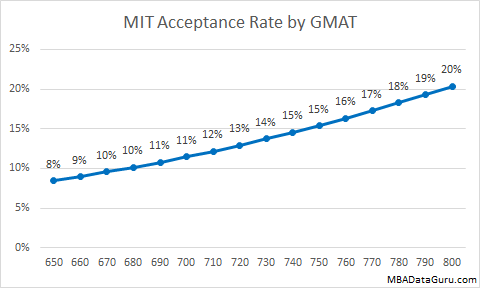 As you would expect, a higher GMAT increases your chance of acceptance at MIT. The average GMAT score at MIT is 713, which results in a 13% acceptance rate. Increasing your GMAT by 100 points from 650 to 750 would roughly double your chance of admission. Even with an 800, the acceptance rate is only 20%.
As you would expect, a higher GMAT increases your chance of acceptance at MIT. The average GMAT score at MIT is 713, which results in a 13% acceptance rate. Increasing your GMAT by 100 points from 650 to 750 would roughly double your chance of admission. Even with an 800, the acceptance rate is only 20%.
MIT MBA Acceptance Rate by GPA
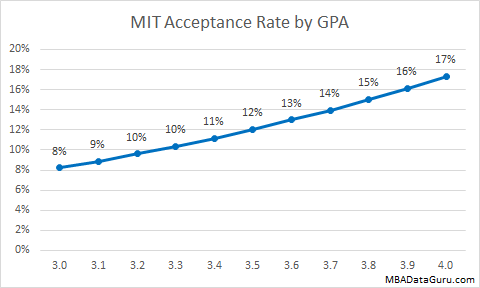 GPA is also critical for admission into the Sloan School of Management. The average GPA is very high at 3.6. For each .10 change in GPA, the acceptance rate changes by roughly 1%. Obviously your GPA is likely already written in stone, so you should focus on increasing your GMAT instead.
GPA is also critical for admission into the Sloan School of Management. The average GPA is very high at 3.6. For each .10 change in GPA, the acceptance rate changes by roughly 1%. Obviously your GPA is likely already written in stone, so you should focus on increasing your GMAT instead.
MIT MBA Acceptance Rate: GMAT vs. GPA
Most schools prefer a high GMAT score* to a high GPA, however MIT is not one of them. The only other school that prefers a high GPA is Harvard Business School. Although GPA matters slightly more than GMAT, GPA can’t be changed once you graduate. If you have a low GPA then make sure you have a solid GMAT and focus on other factors like leadership and volunteer work. I started a networking group that grew to 900 people, which went over well with the admissions committee. It wasn’t even hard, I just started a meetup group in my area.
MIT MBA Acceptance Rate by Round
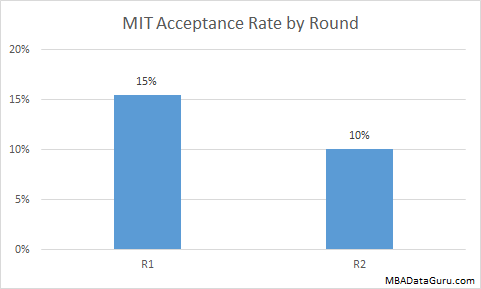 At Sloan, the round you apply in is very important. As you can see in the graph above, acceptance rate at MIT is 50% higher for round 1 applicants compared to round 2. If you have no other choice, you might as well apply round 2, but absolutely try to apply round 1 if possible.
At Sloan, the round you apply in is very important. As you can see in the graph above, acceptance rate at MIT is 50% higher for round 1 applicants compared to round 2. If you have no other choice, you might as well apply round 2, but absolutely try to apply round 1 if possible.
GMAT, GPA and application round were the only factors that had a noticeable affect on admissions rate. Surprisingly, industry, major and years or work experience had no impact on acceptance rate.
*A high GMAT or high GPA is defined as one standard deviation above average.
Booth Admissions Rate Analysis
University of Chicago is a fairly selective business school with an acceptance rate of 22%. Similar to Kellogg, Booth has one of the higher acceptance rates for a top 10 school. While building an MBA admission calculator, I uncovered some insights on how Booth evaluates MBA applicants.
Booth Admissions Rate by GMAT
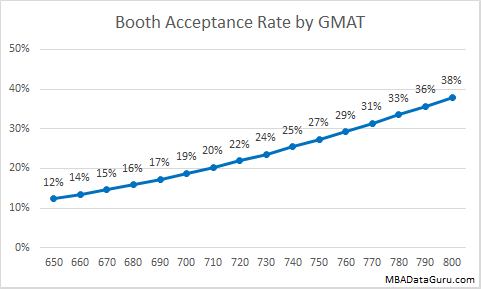 The graph above demonstrates that GMAT has a high impact on Booth admissions. Increasing your GMAT from 650 to 750 more than doubles your chance of admission. The average GMAT score for an applicant is 718, but the admitted applicants have a slightly higher GMAT of 724.
The graph above demonstrates that GMAT has a high impact on Booth admissions. Increasing your GMAT from 650 to 750 more than doubles your chance of admission. The average GMAT score for an applicant is 718, but the admitted applicants have a slightly higher GMAT of 724.
Booth Admissions Rate by GPA
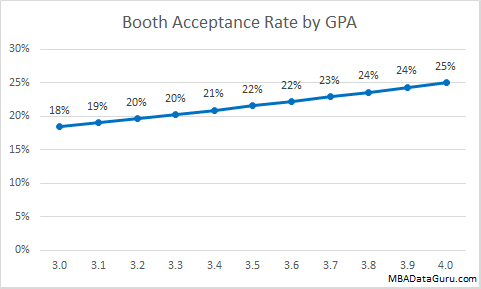 A high GPA will give you a slightly higher acceptance rate at University of Chicago, but it is easy to see that GPA doesn’t have a very large impact on admission rate. Even with a 3.0 GPA the Booth acceptance rate is 18% which is higher than the acceptance rate at Harvard for an applicant with a 4.0.
A high GPA will give you a slightly higher acceptance rate at University of Chicago, but it is easy to see that GPA doesn’t have a very large impact on admission rate. Even with a 3.0 GPA the Booth acceptance rate is 18% which is higher than the acceptance rate at Harvard for an applicant with a 4.0.
Booth Acceptance Rate GMAT vs. GPA
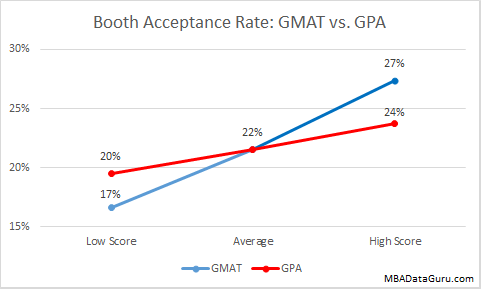 The graph above compares the importance of GMAT vs. GPA to Booth admissions. Candidates with a high GMAT score had a significantly higher acceptance rate than those who had a high GPA.* If you have a high GMAT and a low GPA, University of Chicago is an ideal school at which to apply. For example an applicant with 3.0 GPA and a 760 GMAT has a 25% chance of being admitted.
The graph above compares the importance of GMAT vs. GPA to Booth admissions. Candidates with a high GMAT score had a significantly higher acceptance rate than those who had a high GPA.* If you have a high GMAT and a low GPA, University of Chicago is an ideal school at which to apply. For example an applicant with 3.0 GPA and a 760 GMAT has a 25% chance of being admitted.
Booth Admission Rate by Age
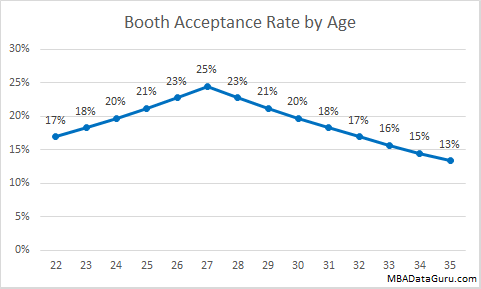 Similar to Duke and Cornell, the Booth admission committee prefers applicants who are around 27. The further a candidate is from the average age, the lower their chance of acceptance is. I believe that this is because candidates with around 5 years of work experience have worked long enough to impress potential employers and contribute to classroom discussion while not being over qualified for on campus recruiting positions.
Similar to Duke and Cornell, the Booth admission committee prefers applicants who are around 27. The further a candidate is from the average age, the lower their chance of acceptance is. I believe that this is because candidates with around 5 years of work experience have worked long enough to impress potential employers and contribute to classroom discussion while not being over qualified for on campus recruiting positions.
Booth Admissions Rate by Round
 Which round you apply in does actually affect your chance of admission at University of Chicago. There is a small drop off in acceptance rate between round 1 and 2, but then a large drop in round 3.
Which round you apply in does actually affect your chance of admission at University of Chicago. There is a small drop off in acceptance rate between round 1 and 2, but then a large drop in round 3.
Other Factors that Impact Booth Acceptance Rate
Applicants who are living in India have only a 7% chance of being accepted at Booth. Science and Math majors have a slightly higher chance of admission. Liberal Arts and Humanities majors have an exceptionally high chance of being accepted, at 56%, while Engineering majors have lower odds at 17%. I think that it is not that Booth is specifically trying to attract Liberal Arts majors, but that they are trying to bring in more women, who happen to be more likely to major in Liberal Arts. Finally investment bankers have only a 14% acceptance rate at Booth.
*A high GMAT or high GPA is defined as one standard deviation above average.
Duke MBA Acceptance Rate Analysis
Duke’s Fuqua School of Business is one of the top 20 MBA programs in the US. The Duke MBA acceptance rate is 25%, which makes being admitted a big accomplishment. The next question is obviously what characteristics does the Duke admissions committee look for in Fuqua applicants? Not only are GMAT and GPA important factors that will impact your admissions, but also your age and the round you apply in affect your chance of acceptance.
Duke MBA Acceptance Rate by GMAT
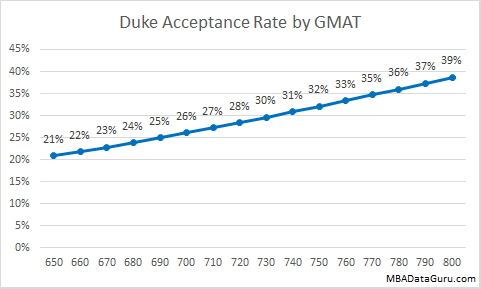 The average Duke applicant has a GMAT of 690, several points lower than the 697 for accepted candidates. As expected the acceptance rate increases as an applicants GMAT rises. The graph above shows Duke MBA acceptance rate by GMAT for the average applicant with a GPA of 3.35.
The average Duke applicant has a GMAT of 690, several points lower than the 697 for accepted candidates. As expected the acceptance rate increases as an applicants GMAT rises. The graph above shows Duke MBA acceptance rate by GMAT for the average applicant with a GPA of 3.35.
Duke MBA Acceptance Rate by GPA
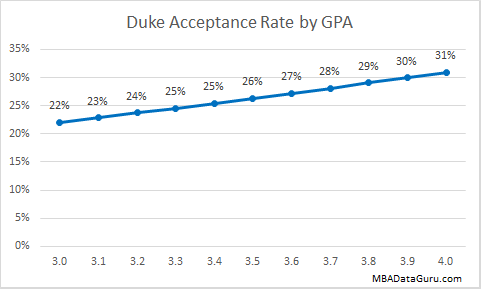 Unlike schools such as Stanford and Cornell, GPA does affect Duke MBA acceptance rate. The average applicant has a GPA of 3.35, however accepted applicant’s GPA is slightly higher. Above you can see the admission rate by GPA at Fuqua.
Unlike schools such as Stanford and Cornell, GPA does affect Duke MBA acceptance rate. The average applicant has a GPA of 3.35, however accepted applicant’s GPA is slightly higher. Above you can see the admission rate by GPA at Fuqua.
Duke MBA Acceptance Rate GMAT vs. GPA
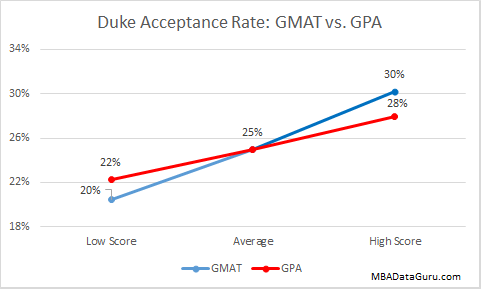 Now that you know that GMAT and GPA both matter to Duke, the next question is which is more important. My admissions analysis shows that Duke prefers GMAT over GPA*. A high score on the GMAT will increase Duke MBA acceptance rate from 25% to 30%. However, a high GPA only increases your chance of admission at Duke to 28%. For applicants with a high GMAT and low GPA, Duke is a good school at which to apply. For example an applicant with a 750 GMAT and 3.0 GPA has a 29% chance of getting into Duke.
Now that you know that GMAT and GPA both matter to Duke, the next question is which is more important. My admissions analysis shows that Duke prefers GMAT over GPA*. A high score on the GMAT will increase Duke MBA acceptance rate from 25% to 30%. However, a high GPA only increases your chance of admission at Duke to 28%. For applicants with a high GMAT and low GPA, Duke is a good school at which to apply. For example an applicant with a 750 GMAT and 3.0 GPA has a 29% chance of getting into Duke.
Duke MBA Acceptance Rate by Age
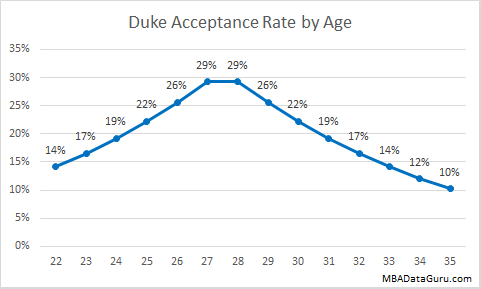 Similar to other schools such as Stern, age impacts acceptance rate. Applicants who are around 27 to 28 have the highest chance of being accepted at Duke, while older and younger candidates have lower odds of being admitted. My hypothesis is that younger applicants don’t bring as much work experience to the class room discussion while older applicants are hard to place at top companies during on campus recruiting.
Similar to other schools such as Stern, age impacts acceptance rate. Applicants who are around 27 to 28 have the highest chance of being accepted at Duke, while older and younger candidates have lower odds of being admitted. My hypothesis is that younger applicants don’t bring as much work experience to the class room discussion while older applicants are hard to place at top companies during on campus recruiting.
Duke MBA Acceptance Rate by Round
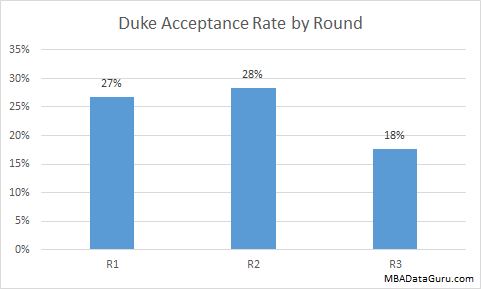 I looked into how application round affected your chance of admission at Duke, and it was not statistically significant. Even the low round 3 acceptance rate cannot be confirmed as accurate because of low volume. Don’t worry too much about applying first or second round, but you may want to avoid round 3 just to be safe.
I looked into how application round affected your chance of admission at Duke, and it was not statistically significant. Even the low round 3 acceptance rate cannot be confirmed as accurate because of low volume. Don’t worry too much about applying first or second round, but you may want to avoid round 3 just to be safe.
Other Factors Affecting Acceptance Rate
People applying from India had a significantly lower chance of admissions, while applicants from the US had a higher acceptance rate at Duke. Applicants who majored in business had a slightly lower admission rate. Military applicants had an astonishingly high acceptance rate of 50%. So all you veterans out there should strongly consider applying to Duke.
The data used for this analysis comes from GMAT Club.
*For GMAT vs. GPA comparison a high score is defined by one standard deviation above the average GMAT or GPA.
Cornell MBA Acceptance Rate Analysis
Many MBA applicants wonder what their chances of getting into a top school is. This analysis looks at Cornell MBA acceptance rate based on data such as GMAT, GPA, undergraduate major, and age at application. The average acceptance rate at Cornell’s Johnson Graduate School of Management is 22%, which is higher than all of the schools in the top 10 but lower than many of the schools ranked 11 to 20.
Cornell MBA Acceptance Rate by GMAT
 As you would expect, GMAT has a high impact on Cornell MBA acceptance rate. The average GMAT for the Cornell MBA class of 2016 is 700. Although GMAT does affect Cornell MBA acceptance rate, GMAT has a smaller importance than other schools such as Kellogg. Increasing your GMAT score by 30 points raises your chance of admission by 5% at Kellogg but only by 2% at Cornell.
As you would expect, GMAT has a high impact on Cornell MBA acceptance rate. The average GMAT for the Cornell MBA class of 2016 is 700. Although GMAT does affect Cornell MBA acceptance rate, GMAT has a smaller importance than other schools such as Kellogg. Increasing your GMAT score by 30 points raises your chance of admission by 5% at Kellogg but only by 2% at Cornell.
Cornell MBA Acceptance Rate by GPA
Strangely enough it appears that GPA has little to no impact on your acceptance rate at Johnson. When I ran the logistic regression, GPA was the first variable I eliminated. Even at Stanford, GPA wasn’t eliminated until almost at the end. This suggests to me that Cornell really doesn’t care about GPA. If you have a low GPA and a high GMAT, then you should be applying to Cornell for the highest chance of admission. The average GPA from my data set, which came from GMAT Club, was 3.40 for both accepted and for declined applicants.
Cornell MBA Acceptance Rate by Age
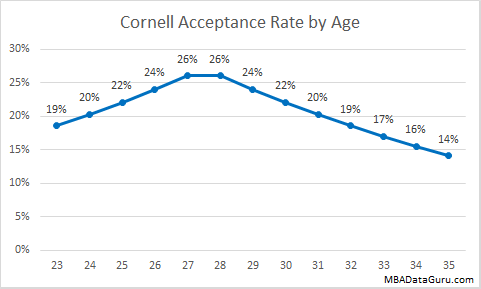 Although your GPA doesn’t matter to Cornell, the age at which you apply does matter. Similar to other schools, such as NYU, the age at which you apply does impact your chance of admission. Cornell prefers candidates who are close to the average age of around 27 or 28. The further you deviate from this average age, the lower your chances of admission are. I believe that the schools do this for two reasons. The first is that young people don’t have as much work experience, so they tend to have less to contribute to the conversation in class. At the other end, candidates that are too old are harder to place in recruiting because companies wonder why someone who is so old is getting an MBA. I have noticed that the women in my program tend to be younger on average than the men. I imagine that the admissions department will give women a little more leeway on applying younger because some women want to finish their MBA before they start a family.
Although your GPA doesn’t matter to Cornell, the age at which you apply does matter. Similar to other schools, such as NYU, the age at which you apply does impact your chance of admission. Cornell prefers candidates who are close to the average age of around 27 or 28. The further you deviate from this average age, the lower your chances of admission are. I believe that the schools do this for two reasons. The first is that young people don’t have as much work experience, so they tend to have less to contribute to the conversation in class. At the other end, candidates that are too old are harder to place in recruiting because companies wonder why someone who is so old is getting an MBA. I have noticed that the women in my program tend to be younger on average than the men. I imagine that the admissions department will give women a little more leeway on applying younger because some women want to finish their MBA before they start a family.
Other Factors that Impact Acceptance Rate
Candidates who apply while living in India have a lower acceptance rate, while those applying while in the US have a higher admission rate. Applicants who majored in engineering during their undergraduate program have a lower acceptance rate. The admission rate for applicants who are currently working in manufacturing is significantly lower than anyone else.
Good luck with your applications!
GPA Trivial to Stanford Business School Acceptance Rate
Although the original predictive model I built for Stanford suggested that GPA didn’t matter, I updated the model using different data cleaning techniques and I now believe that GPA is important to Stanford. Although GPA does matter, GMAT is still much more important. The new Stanford MBA Acceptance Rate Analysis can be found here.
Stanford business school has the lowest acceptance rate of 6% out of all MBA programs in the US. I am sure everyone wants to know the secret to increase their Stanford business school acceptance rate. Shockingly Stanford GBS does not care about your GPA. I built a statistical model to predict Stanford business school acceptance rate, and there was no evidence that a high GPA increases your chance of admission at Stanford.
Stanford Business School Acceptance Rate by GMAT
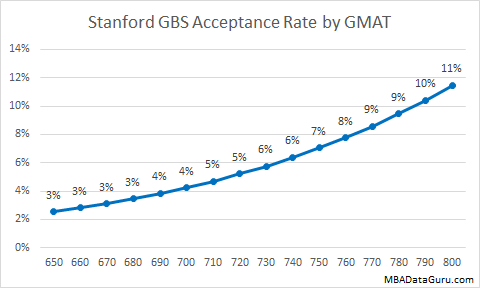 The graph above shows how Stanford business school acceptance rate changes based on GMAT. There is a strong relationship between GMAT and Stanford MBA acceptance rate. Surprisingly, even with an 800 GMAT your chance of admission is still only 11%. Since there are over 7,000 applicants for only 400 spots it is difficult to be accepted.
The graph above shows how Stanford business school acceptance rate changes based on GMAT. There is a strong relationship between GMAT and Stanford MBA acceptance rate. Surprisingly, even with an 800 GMAT your chance of admission is still only 11%. Since there are over 7,000 applicants for only 400 spots it is difficult to be accepted.
Stanford Business School Acceptance Rate by GPA
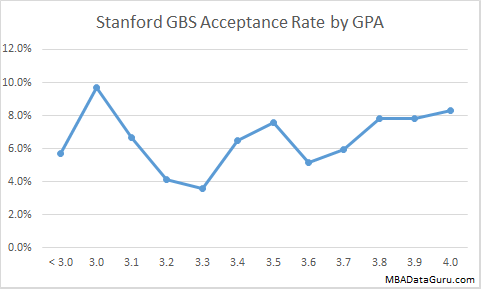 Although GMAT is important to GBS, there is no relationship between GPA and acceptance rate. This is completely the opposite of Harvard where GPA is more important than GMAT. Surprisingly the highest admission rare is for applicants with a 3.0 GPA. Don’t worry too much about the high acceptance rate for low GPAs, there were only 28 applicants with a 3.0, which is not enough of a sample size to be confident. There is however enough data to confirm that there is no strong relationship between GPA and admissions. For those stats nerds out there, the P-value for the GPA variable was 33%, so clearly it had to be eliminated.
Although GMAT is important to GBS, there is no relationship between GPA and acceptance rate. This is completely the opposite of Harvard where GPA is more important than GMAT. Surprisingly the highest admission rare is for applicants with a 3.0 GPA. Don’t worry too much about the high acceptance rate for low GPAs, there were only 28 applicants with a 3.0, which is not enough of a sample size to be confident. There is however enough data to confirm that there is no strong relationship between GPA and admissions. For those stats nerds out there, the P-value for the GPA variable was 33%, so clearly it had to be eliminated.
Stanford Business School Acceptance Rate by Round
 Although GPA doesn’t affect Stanford MBA admission rate, the round you apply in does have a large impact on your chances. The acceptance rate for round one is already below 8% and only drops even lower after that. This is similar to Harvard where application round has a strong impact on acceptance rate. If you are not a perfect candidate with great GMAT and work experience, don’t even bother with round 2 or 3. Might as well wait until next year’s round one unless you enjoy throwing away $250 on your application.
Although GPA doesn’t affect Stanford MBA admission rate, the round you apply in does have a large impact on your chances. The acceptance rate for round one is already below 8% and only drops even lower after that. This is similar to Harvard where application round has a strong impact on acceptance rate. If you are not a perfect candidate with great GMAT and work experience, don’t even bother with round 2 or 3. Might as well wait until next year’s round one unless you enjoy throwing away $250 on your application.
The only other factor that impacts acceptance rate is your pre-MBA industry. Consultants have a 9% acceptance rate compared to other candidates’ 6% chance of admission to GBS. Undergraduate major, years of work experience, and age have no affect on your chances at Stanford business school.
The data used to do this analysis came from GMAT Club website.
Kellogg Acceptance Rate Analysis
Kellogg’s acceptance rate is on the higher side for a top 10 MBA program at over 20%. But don’t be fooled, getting into Kellogg is still very difficult. In addition to high expectations for GMAT and GPA, Kellogg allows all applicants to interview. This allows Kellogg to find candidates with the best interpersonal skills even if they don’t have high scores. Since I don’t have information on candidates’ interpersonal skills, I’ll stick to GMAT and GPA. I built a model that can estimate an applicants chance of admissions to Kellogg based on a few key pieces of data . I am posting the insights I found in the model here until I am able to build the admissions calculator over winter break.
Kellogg Acceptance Rate by GMAT
The average GMAT score for Kellogg’s 2 year MBA program is 717, however the average GMAT for applicants is lower, coming in at 709. The graph above shows the relationship between GMAT and Kellogg acceptance rate for the average applicant, who has a GPA of 3.38. You can see there is a strong relationship between GMAT and Kellogg acceptance rate. An applicant to Northwestern has twice the chance of getting in with a 750 compared to a 650.
Kellogg Acceptance Rate by GPA
Similar to GMAT, having a higher GPA increases your chance of admission at Kellogg. Even with a low GPA of 3.0, the admission rate is still over 20%. The graph above shows Kellogg acceptance rate by GPA for the average candidate, who has a GMAT of 709 (yes I know that it is not a possible score).
Kellogg prefers GMAT over GPA
By comparing admissions for candidates with a high GMAT score vs high GPA, I found that Kellogg prefers a high GMAT over a high GPA.* This is good news for candidates who are willing to put in the hard work to get a high GMAT score. Having a high GPA only increases your chance of admission by 2% to 25%. On the other hand, having a high GMAT increases the Kellogg acceptance rate to 29%. On the flip side, if you have a low GMAT then it will harm your chance of admission more than a low GPA.
Kellogg Acceptance Rate by Round
Round 1 applicants had the highest acceptance rate, with round 3 acceptance rate the lowest. These numbers are a little misleading because they don’t take into account difference in the average candidate quality for the different rounds.
 The lower acceptance rate for Kellogg applicants in later rounds is explained by lower GMAT and GPA. This is why application round is not a factor in my admission model. Applying in a later round does not appear to harm your chance of admission at Kellogg significantly, especially if you can use that time to raise your GMAT or improve your essay.
The lower acceptance rate for Kellogg applicants in later rounds is explained by lower GMAT and GPA. This is why application round is not a factor in my admission model. Applying in a later round does not appear to harm your chance of admission at Kellogg significantly, especially if you can use that time to raise your GMAT or improve your essay.
Other Admissions Factors
The last two factors that had an impact on admission rate were country and industry. Applicants who were living in India had a roughly 6% chance of admission. Candidates who worked in computer software while applying had a 5% chance of admission. Both of these factors were statistically significant, meaning that there was enough data to verify the effect.
Good luck with your applications! Let me know if you have any questions.
*A high score on GMAT or GPA is defined by one standard deviation above average.

